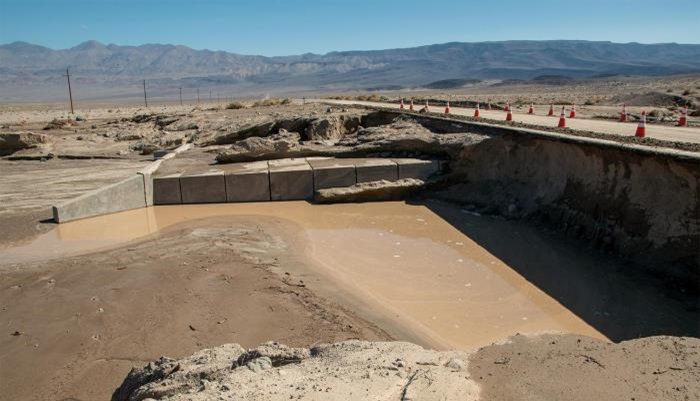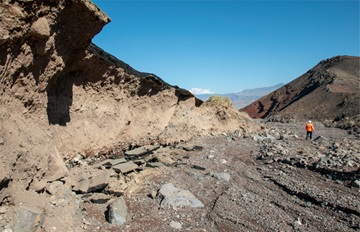Accomplishments report doubles as roadmap for future work

Noteworthy projects, listed within a framework of Caltrans’ six strategic goals, offer lessons for what’s to come
The 2022 Caltrans Annual Accomplishments Report, released this summer, spotlights the department’s important work performed last year in all 12 of its districts and at Sacramento’s Headquarters.
The annual report, first produced for 2020, is framed in the context of Caltrans’ six strategic goals: Safety First, Cultivating Excellence, Stewardship and Efficiency, Multimodal Transportation Network, Climate Action and Equity and Livability. Those goals, in turn, are consonant with CalSTA's and Caltrans’ “Core Four” fundamental principles: Safety, Equity, Climate Action and Economic Prosperity.
By compiling its key accomplishments, Caltrans not only celebrates jobs very well done, but also uses the report to help prepare the department and its more than 22,000 employees for future challenges.
What follows is a brief description of each of Caltrans’ six strategic goals, and examples from the accomplishments report of significant projects from 2022.
Safety First
Caltrans takes proactive measures to reduce risks for all users of the state’s transportation system, including those who drive, walk, ride or use other modes of transportation, as well as for Caltrans employees who are working on the roadways.

State Route 190 sustained much of the roadway damage inflicted by storms last year in and near Death Valley National Park.
District 9 photograph
The latest report describes several safety-related developments of note, including one in District 6. State Routes 33 and 180 cross paths in Mendota, one of the most disadvantaged communities in California. Caltrans worked with the city (which has a population slightly under 13,000) to improve and transform the highways in several ways.
The Caltrans-Mendota collaboration, which will extend for a few more years, began in earnest with a pavement-preservation project that allowed the reconfiguration of the travel lanes by removing one through lane in each direction and placing a center turn lane and Class II bike lanes. The new configuration reduces the number of conflict points for motorists, provides dedicated space for bicyclists, and enhances the safety of pedestrians by eliminating the “multiple threat” issue to pedestrians by having fewer through lanes to cross. Also, a marked crosswalk was installed based on input from residents.
Cultivating Excellence
Caltrans strives to provide quality services to all Californians and collaborate effectively with partners statewide, developing and supporting a skilled workforce committed to delivering excellent results.
In August and September of 2022, several heavy storms in the Death Valley National Park region caused devastating flooding and miles of roadway damage. Maintenance crews were immediately mobilized from around District 9 to assist with debris removal and shoulder repairs, and two emergency projects were initiated to address the pavement loss and undercutting on State Routes 163, 178 and 190.
Caltrans worked closely with its counterparts at the National Park Service, meeting frequently both in the field and virtually to coordinate on public messaging, timing of highway re-openings, and the operation of local escorts to aid in the safe movement of park staff, tribal members residing in the park, and residents of outlying communities.
Strengthen Stewardship and Efficiency
Caltrans continues to deliver on a “fix-it-first” philosophy to support the state’s aging infrastructure while efficiently maximizing the use of our limited transportation funding. Caltrans recognizes and applies asset management to drive socially equitable investment decisions as part of effective performance.
On U.S. Highway 199 near Crescent City in Del Norte County, District 1 completed culvert replacements including a fish-passage improvement. This project also included five culverts in Jedediah Smith Redwoods State Park and involved many partnerships with other state agencies. The trenchless approach installed at three locations boasts less environmental impact, contributes to fewer traffic delays, increases worker safety, and saves time and money.
Enhance and Connect the Multimodal Transportation Network
Caltrans works closely with its partner organizations to modernize and integrate transportation on services and improve connections among various modes of travel — all with the goal of improving the experience of those who use the system.
State Route 37, a 21-mile vital transportation link in the region connecting four North Bay counties in District 4, is extremely vulnerable to flood-related closures due to sea level rise and experiences a high level of congestion. Caltrans, the Metropolitan Transportation Commission and four North Bay Area Transportation Authorities are partners in the Resilient SR 37 program, which works on multiple studies addressing the corridor’s multiple issues.

Caltrans' stormwater public-education campaign is contributing to a cleaner California, especially in coastal areas.
Headquarters photograph
In December 2022, Caltrans completed a comprehensive, long-range Planning and Environmental Linkages (PEL) Study to identify the best solutions to address the diverse environmental and social needs of this complex corridor. The collaborative and integrated approach to transportation decision-making will inform project development for both near-term improvements and the final corridor plan.
Lead Climate Action
To address climate change, Caltrans works to mitigate contributing factors within its control (such as greenhouse gas emissions), create infrastructure that can sustain changing elements (such as earthquakes and wildfires), and lead by example with strategies that can be duplicated and adapted throughout the United States and globally,
In 2022, Caltrans (led by Headquarters) and the California Coastal Commission formally joined forces for the first time during the 38th annual California Coastal Cleanup Day by expanding the typical single-day celebration into a month's worth of public cleanup and litter prevention events throughout September.
Caltrans' stormwater public education campaign, “Let’s Change This to That,” and the California Coastal Commission invited Californians to participate by cleaning up their neighborhoods, parks and especially areas adjacent to waterways. The effort was focused not only on the coastline but also along rivers, creeks and lakes. Trash from inland areas can flow downstream, so cleaning up neighborhoods can prevent litter and debris from ever reaching our vital waterways.
Advance Equity and Livability in All Communities
Caltrans endeavors to deliver outcomes that benefit all and eliminate disparities that have been created by transportation historically so that all people in California are able to achieve economic prosperity by way of a transportation system that allows them to get where they need to go safely, efficiently and with choice in mode.
Through its Clean California program, the District 12 Maintenance Division addresses all acute litter service gaps in underserved areas along Caltrans rights-of-way. Every quarter, state officials assess litter conditions along state highways, ranking litter found along highway locations as satisfactory, minor or acute. Prior to 2022, these assessments showed 35 one-mile highway segments with acute litter conditions in underserved communities in Orange County.
In 2022, the full-time deployment of three Caltrans litter crews and eight contractor litter crews – in addition to incentivized Adopt-a-Highway participation and four active litter maintenance agreements with local agencies – resulted in the virtual elimination of acute trash issues in disadvantaged areas along highway roadsides within District 12’s jurisdiction.
Source: The 2022 Caltrans Annual Accomplishments Report (pdf)

